Abstract
The susceptibilities of 36 recent isolates of Staphylococcus aureus and 35 recent isolates of Staphylococcus epidermidis were determined against each of 65 antimicrobial agents and against two of them in combination. Rifampin was the most active of all the agents tested against both S. aureus and S. epidermidis. Among the penicillins, cloxacillin, dicloxacillin, and nafcillin were most active, although benzylpenicillin and phenoxymethyl penicillin were more active against susceptible strains. Cephaloridine was the most active of the cephalosporins, and sisomicin was the most active aminoglycoside. Minocycline was more active than the other tetracycline analogues tested. Among the macrolide-lincomycin compounds in clinical use, clindamycin was more active, and lincomycin was less active than erythromycin. The synergy of trimethoprim-sulfamethoxazole was more striking against S. aureus than against S. epidermidis. The median minimal inhibitory concentrations of the penicillins, cephalosporins, and aminoglycosides were lower against S. aureus, whereas the minimal inhibitory concentrations of the tetracyclines were lower against S. epidermidis.
Full text
PDF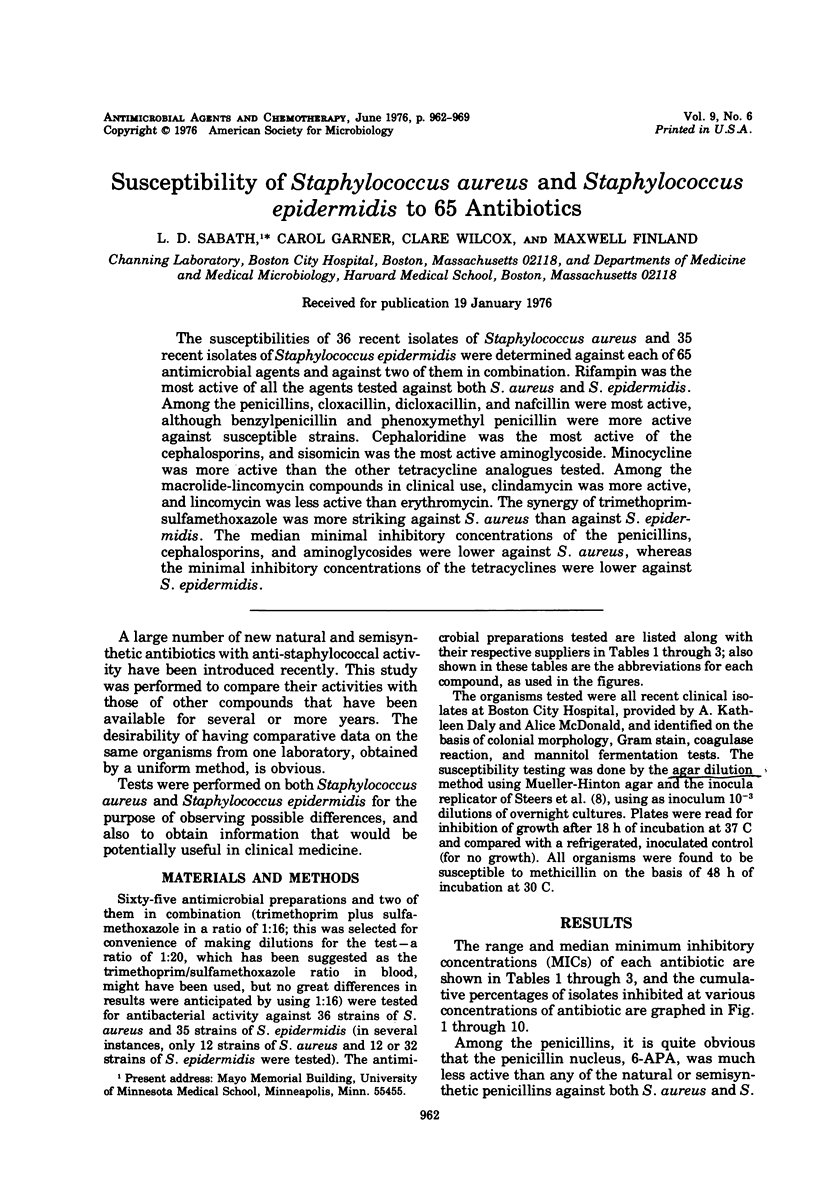
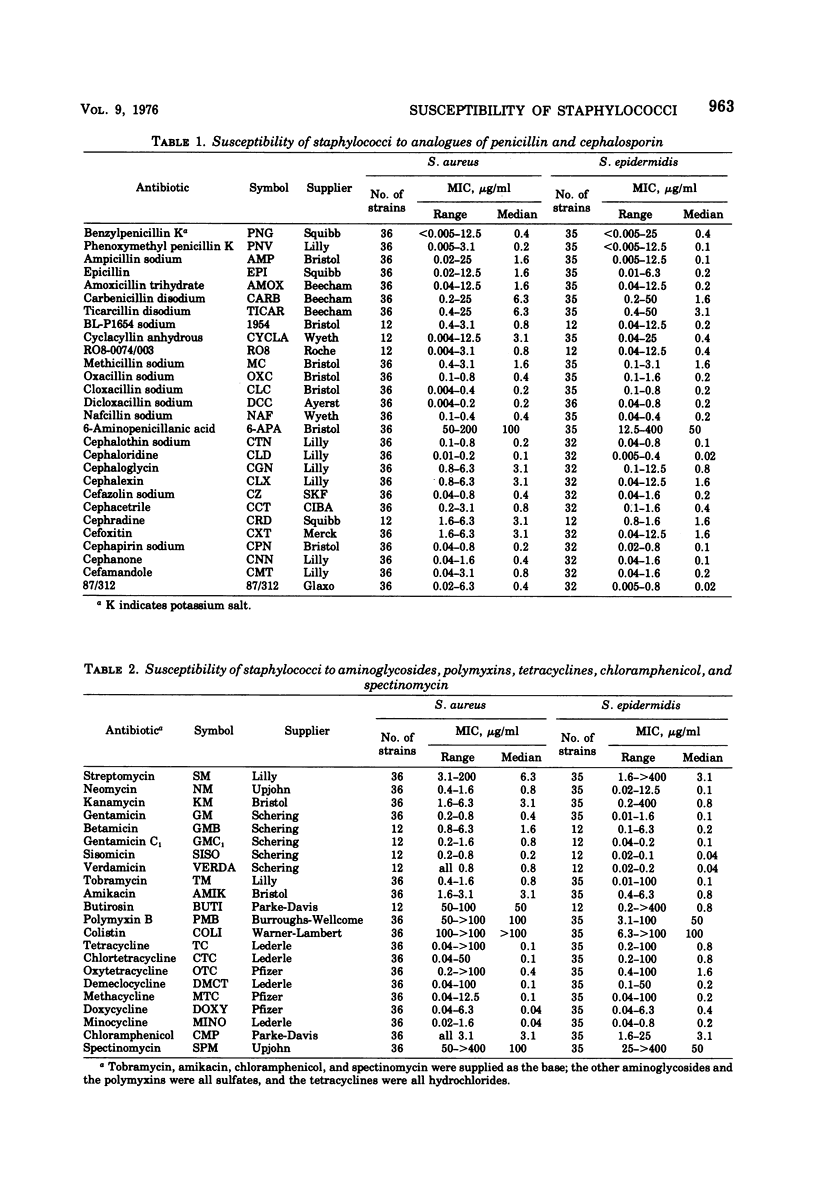
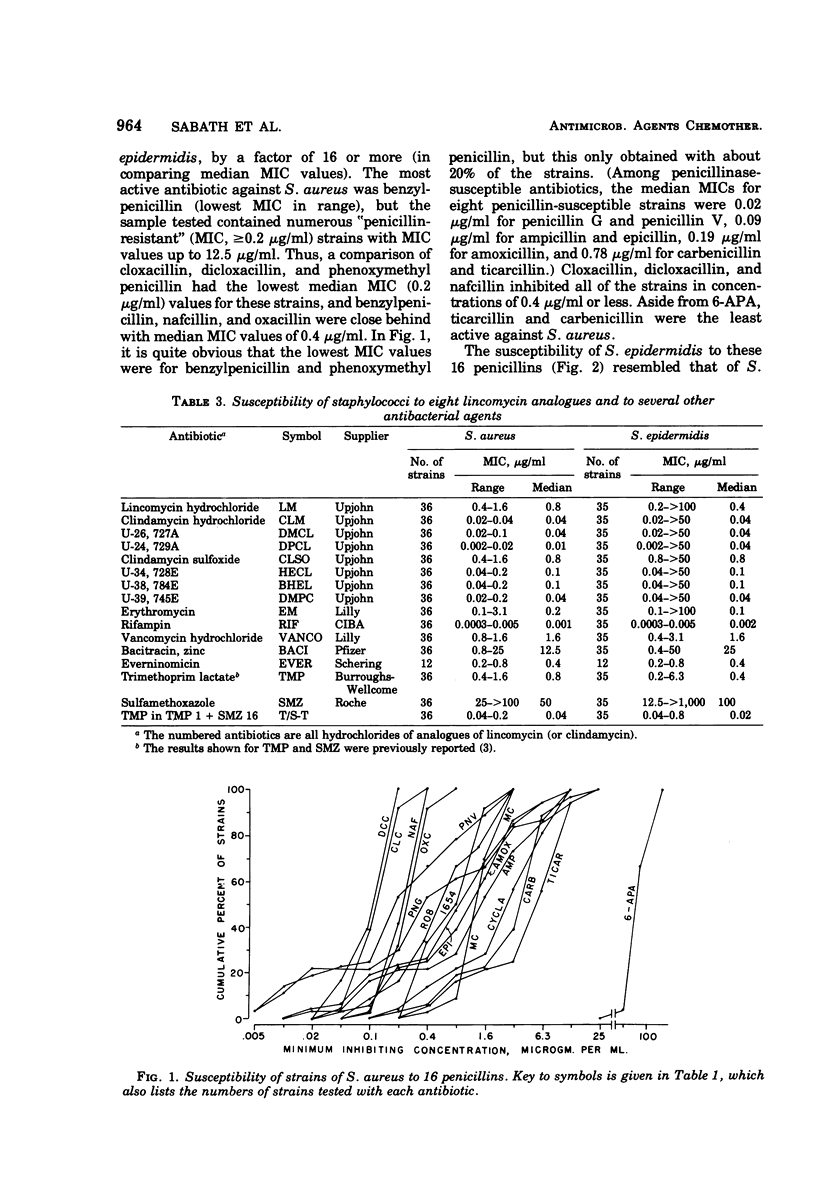
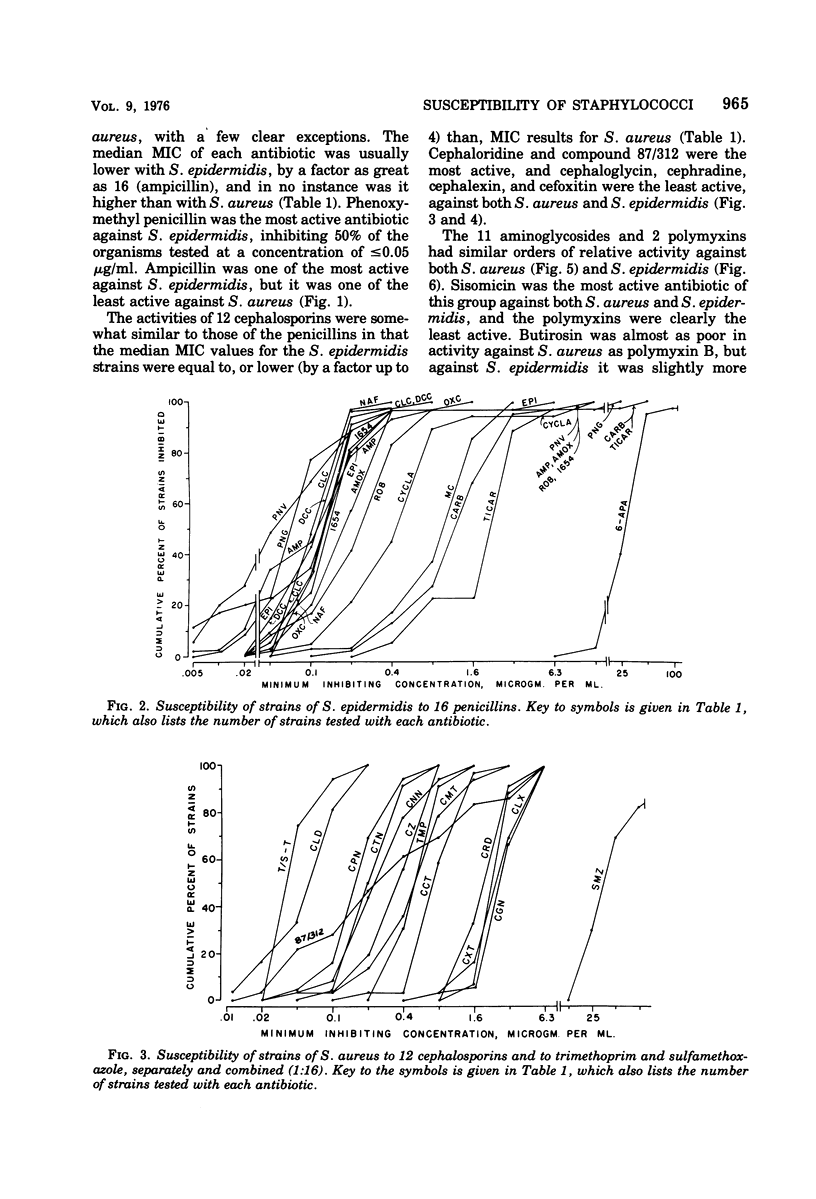
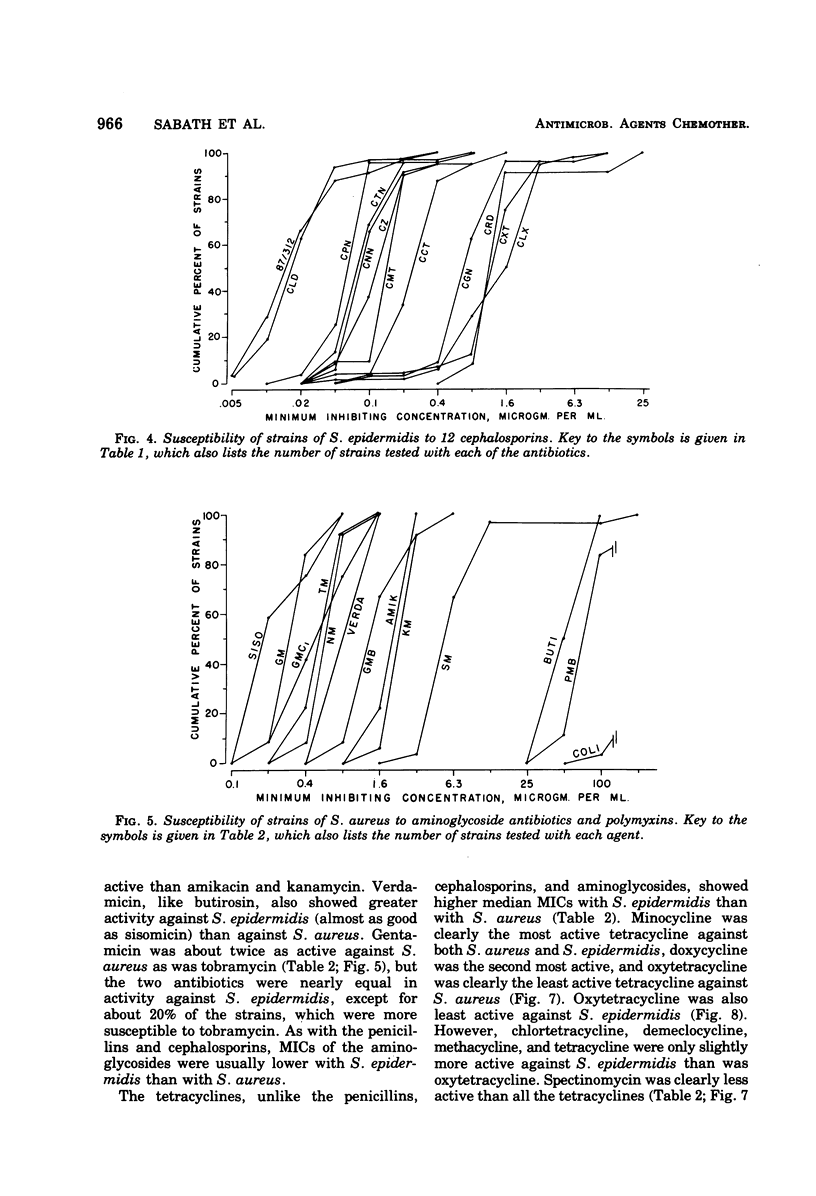
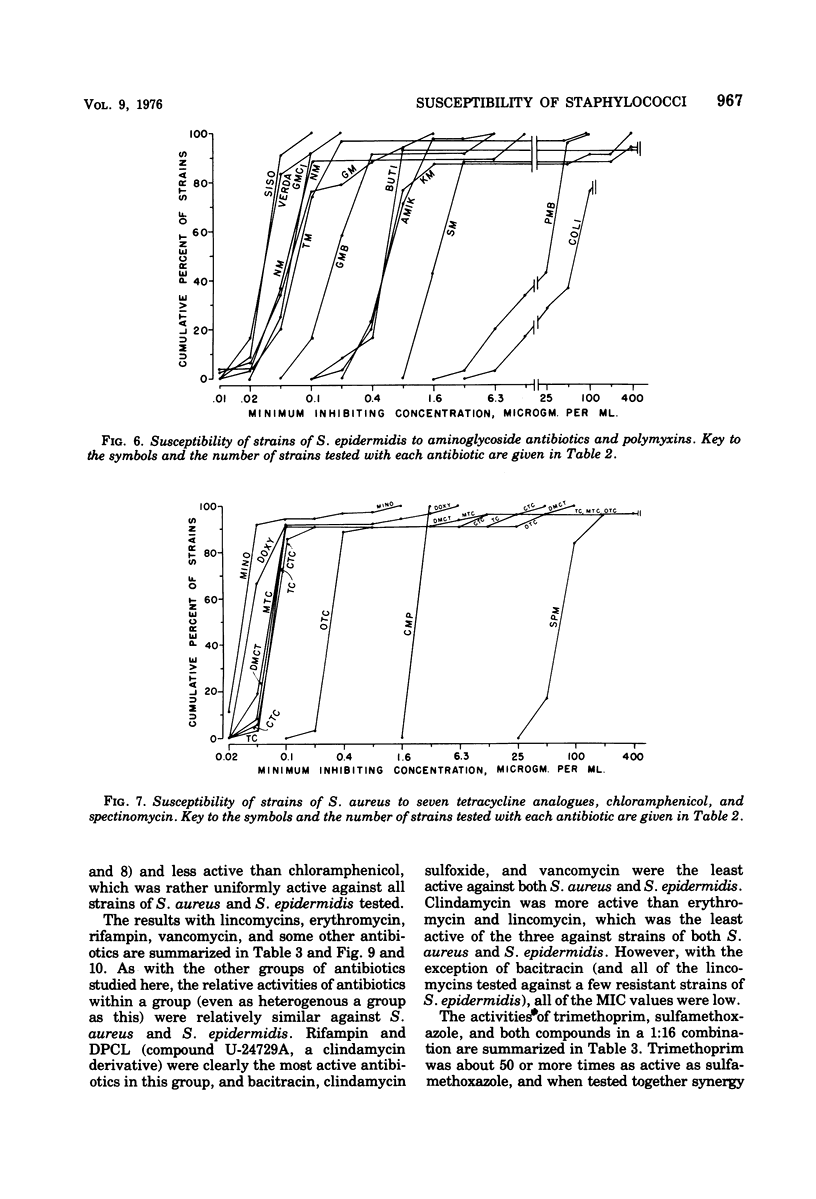
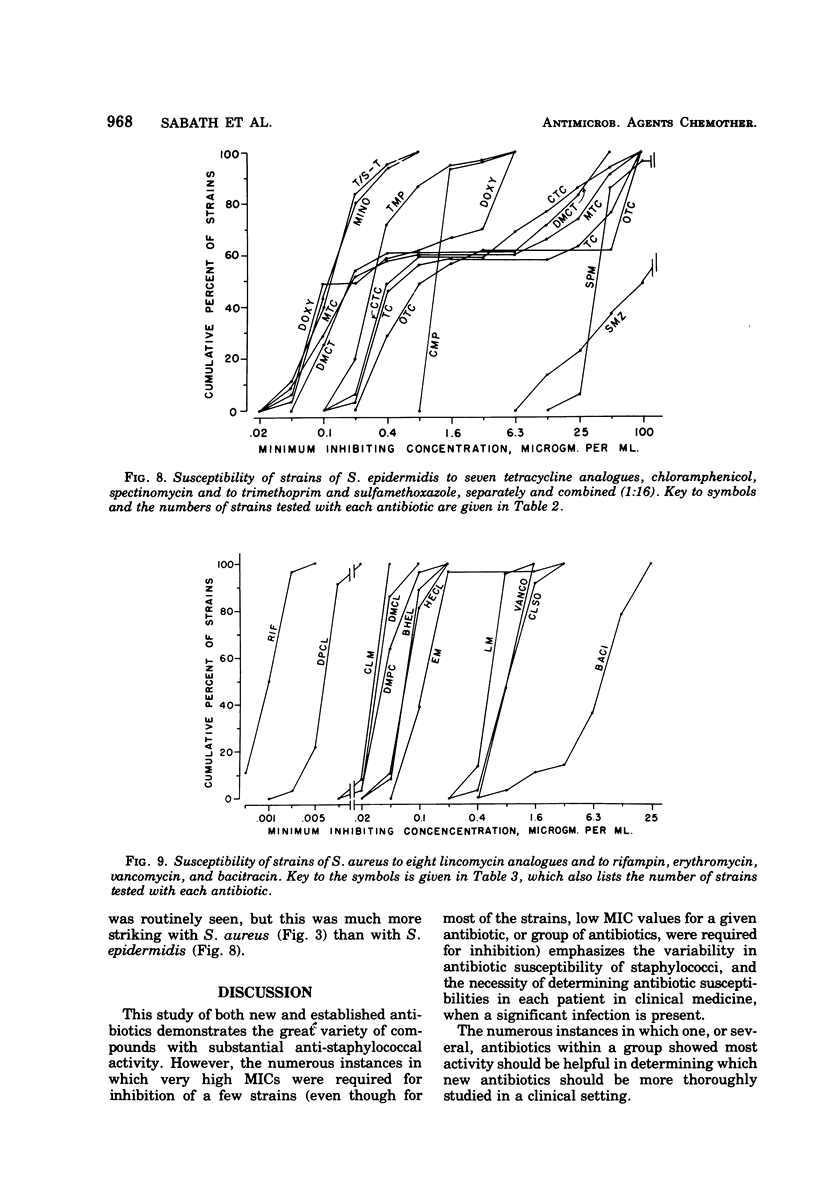
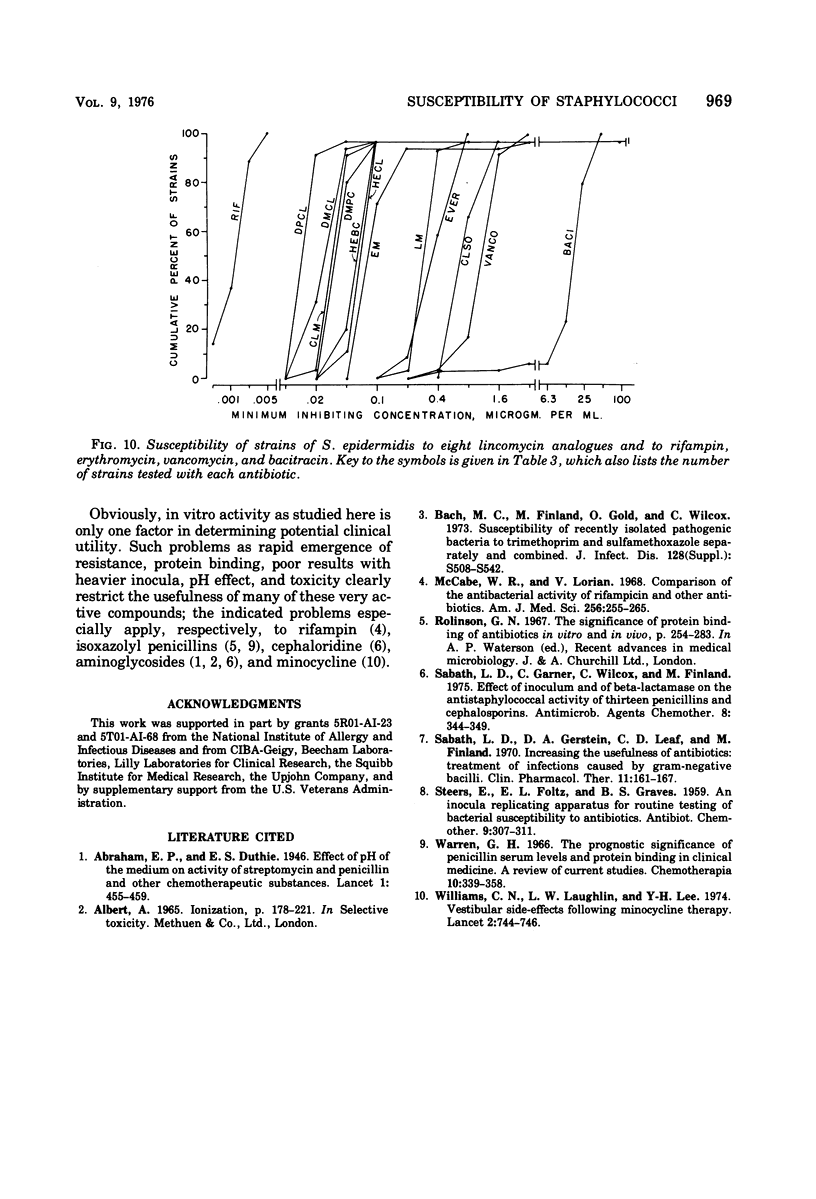
Selected References
These references are in PubMed. This may not be the complete list of references from this article.
- McCabe W. R., Lorian V. Comparison of the antibacterial activity of rifampicin and other antibiotics. Am J Med Sci. 1968 Oct;256(4):255–265. doi: 10.1097/00000441-196810000-00007. [DOI] [PubMed] [Google Scholar]
- Sabath L. D., Garner C., Wilcox C., Finland M. Effect of inoculum and of beta-lactamase on the anti-staphylococcal activity of thirteen penicillins and cephalosporins. Antimicrob Agents Chemother. 1975 Sep;8(3):344–349. doi: 10.1128/aac.8.3.344. [DOI] [PMC free article] [PubMed] [Google Scholar]
- Sabath L. D., Gerstein D. A., Leaf C. D., Finland M. Increasing the usefulness of antibiotics: Treatment of infections caused by gram-negative bacilli. Clin Pharmacol Ther. 1970 Mar-Apr;11(2):161–167. doi: 10.1002/cpt1970112161. [DOI] [PubMed] [Google Scholar]
- Warren G. H. The prognostic significance of penicillin serum levels and protein binding in clinical medicine. A review of current studies. Chemotherapy. 1965;10(6):339–358. doi: 10.1159/000220427. [DOI] [PubMed] [Google Scholar]
- Williams D. N., Laughlin L. W., Lee Y. H. Minocycline: Possible vestibular side-effects. Lancet. 1974 Sep 28;2(7883):744–746. doi: 10.1016/s0140-6736(74)90941-6. [DOI] [PubMed] [Google Scholar]


